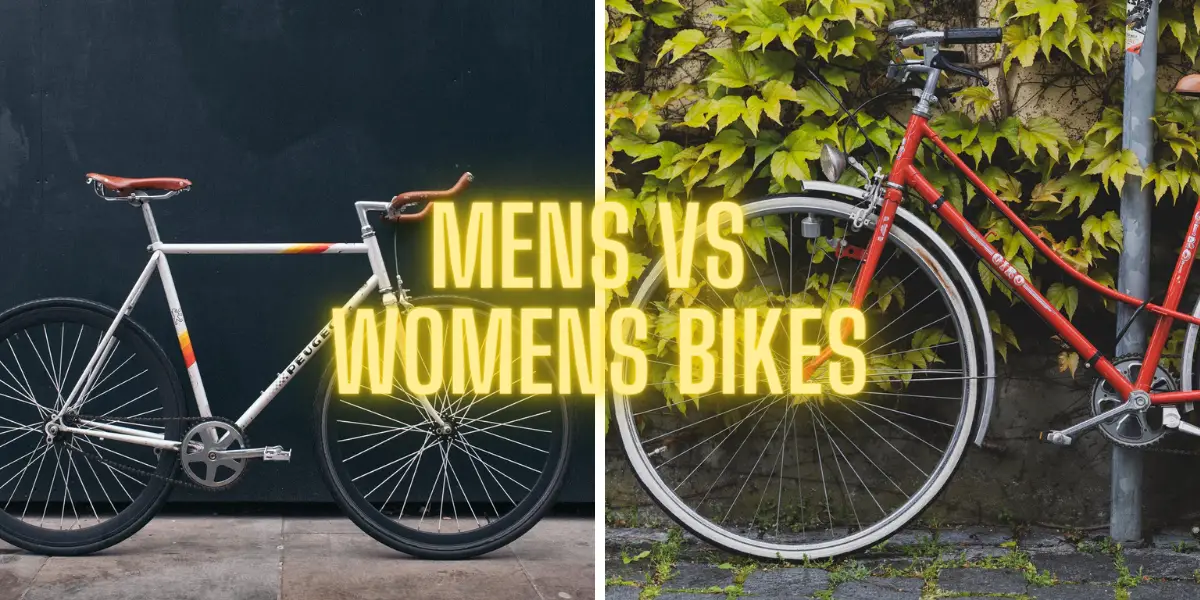Some may think that the need to differentiate men’s and women’s bikes is a bit outdated. It also doesn’t help that in the past, women’s bikes were a bit of a joke performance-wise. Today, however, women’s bikes can easily match men’s bikes in specs, comfort and performance.
Despite the improvement in female bike performance, there still remains some distinct differences between male and female bicycles. These differences range from fit, tube angles, saddles and a lot more.
In this article, I’ll go in-depth on the history, the differences and reasons bike manufacturers differentiate men’s and women’s bikes.
History of Men’s vs Women’s bikes.
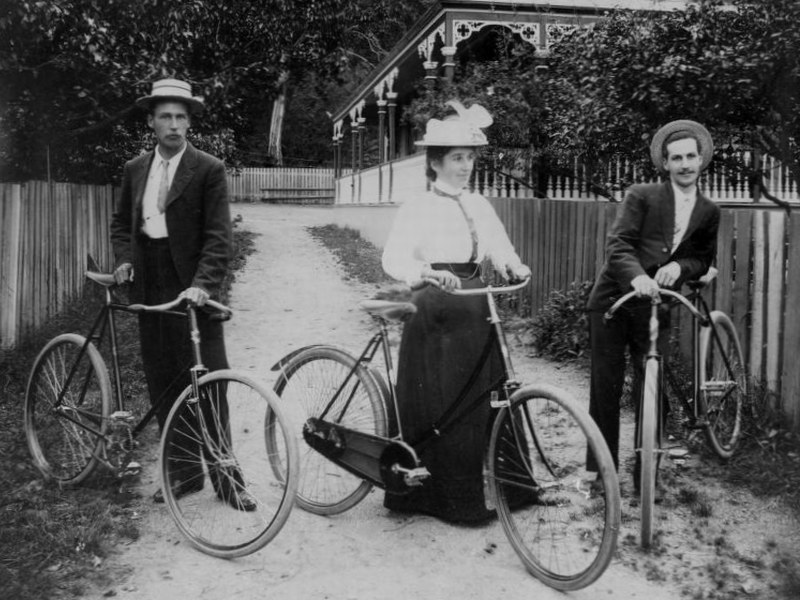
The first bicycles, invented in the early 19th century, were created exclusively for men. In fact, bikes were a “macho” machine: an adventurous man’s accessory. However, in the late 19th century, more and more women began cycling. Thus, bike makers decided to create a bicycle “more fitting” for a woman.
It was a bike with a step-through frame, possessing an inclined top tube, to allow easy access for women without exposing too much skin. (Remember, athleisure wasn’t a thing then. Almost all women wore skirts or long dresses). Today, women’s bikes come in all shapes and sizes, but the step-through frame bike was the predecessor to all modern female bikes.
For a more in-depth history of female bicycling, check out this great article from Bustle. It’s enlightening! Some anti-female biking folks thought riding bikes would lead women to have orgasms mid-ride. SMH!
Related post: Average cycling speed by age (male vs female)
Why are men’s and women’s bikes different?
For a comfortable ride, a bicycle must fit it’s user’s body shape and dimensions. For better or for worse, men and women are built differently. On average, men are taller, larger, and heavier. Women have proportionally longer legs and wider hips. Men and women’s hands vary in size. Also, the pelvic floor of both sexes differ greatly.
| Body Measurements | Average US Male | Average US Female |
| Height (inches) | 69.0 | 63.5 |
| Weight (pounds) | 199.8 | 170.8 |
| Waist circumference (inches) | 40.5 | 38.7 |
These physical differences and others between men and women are the reason for women’s bikes. Of course, there are also marketing reasons. Both sexes tend to have differing bicycle preferences in color, height, style, etc. For example, traditionally, women preferred baskets in front of their bike and their bike colors are usually brighter than men’s.
Recommended post: Spinning Bike vs Stationary Bike
Anatomy of a Bike
Before I begin going over the differences between men’s and women’s bikes, I think it’s important we understand basic bicycle anatomy. The image below covers all the bike parts we will go over later.
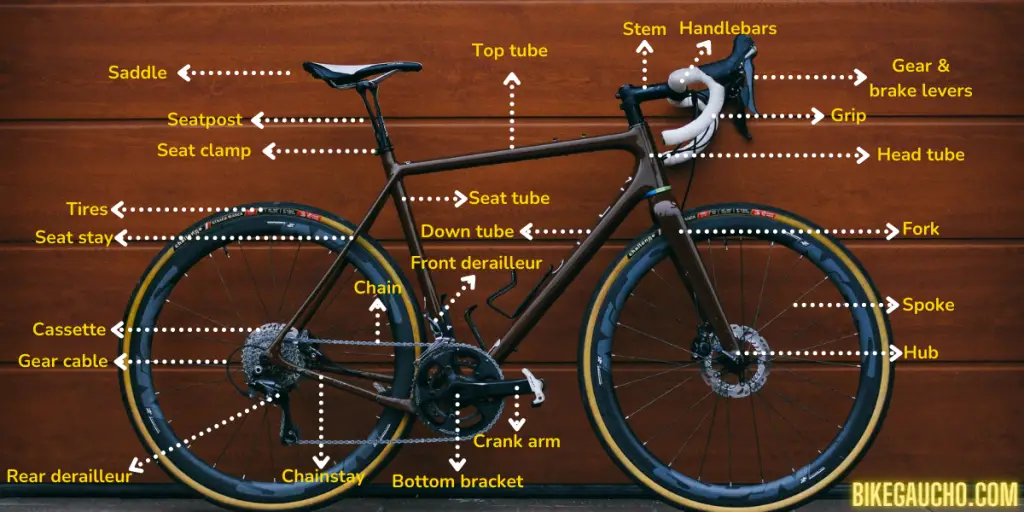
If you ever get lost on any point in the article, don’t hesitate to refer back to this image. Let’s get into it.
New to cycling? Learn the correct bicycle hand signals to communicate effectively with cars and other cyclists
Men’s vs Women’s Bikes
The major difference between men’s and women’s bikes is the frame: Its size as well as its design. The frame of a bike tends to govern the fit and the comfort of each bike to its rider. Men’s bikes are bigger and have some stylistic differences in frame vs women’s bikes.
As noted earlier, the classic women’s bike has a step-through frame, while the classic men’s bike has a step-over frame. However, it’s important to remember these stylistic differences are getting blurred everyday. Some men prefer step-through bikes and vice-versa.
Related: How to mount women’s bike on bike rack
Men’s vs Women’s Bike Frame
There are 9 major differences between men’s and women’s bike frames:
- Top tube
- Stem
- Stack and Reach
- Suspension
- Handlebar and grips
- Brake levers
- Crankset
- Seat (saddle)
- Seatpost
Top Tube
A bicycle’s top tube is the bar that connects the seat tube to the head tube. It’s the tube between your legs when riding. Bikes for men vary from women’s in both length and angle of the top tube.
Top Tube Length
The length of the top tube for women’s bikes are shorter to take into account their smaller torsos. A shorter top tube means the distance between the seat and handlebars is reduced. This makes it easier for women to reach the grips and handlebars.
Top Tube Angle
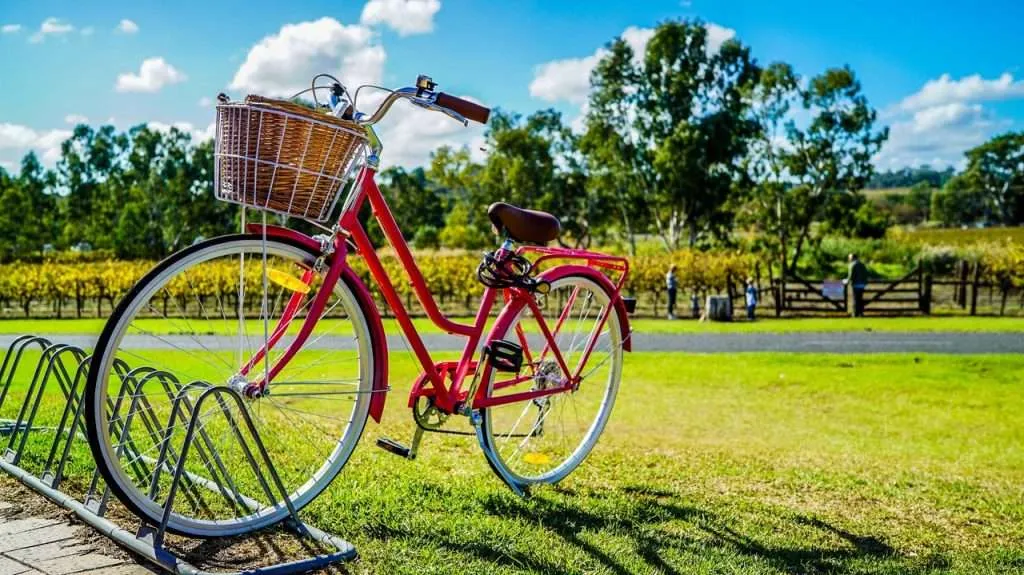
It’s the most obvious visual difference between men’s and women’s bikes. The top tube angle on a men’s bike is horizontal, straighter and less inclined. Women’s bikes, on the other hand, have a more inclined or downward-sloping top tube.
Note: the downward sloping top tube for women is more common in casual or commuter bikes. For women’s performance bikes, the angle is the same or more similar (flatter) to comparable men’s bikes.
Stem
Bike stems connect the handlebar to the fork steering tube. The bike stem’s height and length affect the biker’s reach. A taller stem makes it easier to reach the handlebars, while a longer (length) stem is farther away to reach.
Normally, women’s’ bikes have a smaller (length) and taller (height) stem than men’s’. The taller and smaller stem makes the handlebars much easier to reach. Bikes for men have longer (length) and shorter (height) to provide a more comfortable riding position for their longer arms.
Stack & Reach
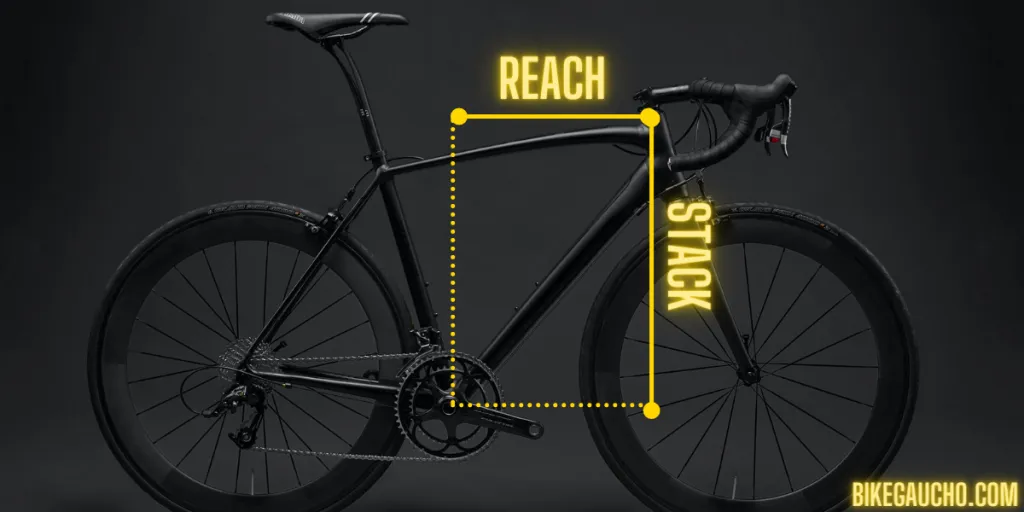
First, some basic bike geometry.
Stack is the vertical distance from bottom bracket to the center of the top of the head tube.
Reach is the horizontal distance from the bottom bracket to the center of the top of the head tube.
To summarize, stack refers to height, while reach refers to length. In both cases, women’s bikes have a shorter stack and reach because females’ height and torsos are smaller than males. This makes it easier for ladies to comfortably grip the handlebars and reach the bike pedals.
Suspension
Bike suspension is the system used to “suspend” the rider and bicycle from the terrain’s roughness. This includes front and rear suspension.
To provide optimum ride comfort, men’s and women’s bikes differ in suspension to take into account the difference in weight between men and women. Men’s bikes are built to withstand more compression due to their heavier weight.
Depending on your bike, the rear shock, front fork shock, seatpost, saddle, stem or hub may be tweaked to achieve the proper suspension for you.
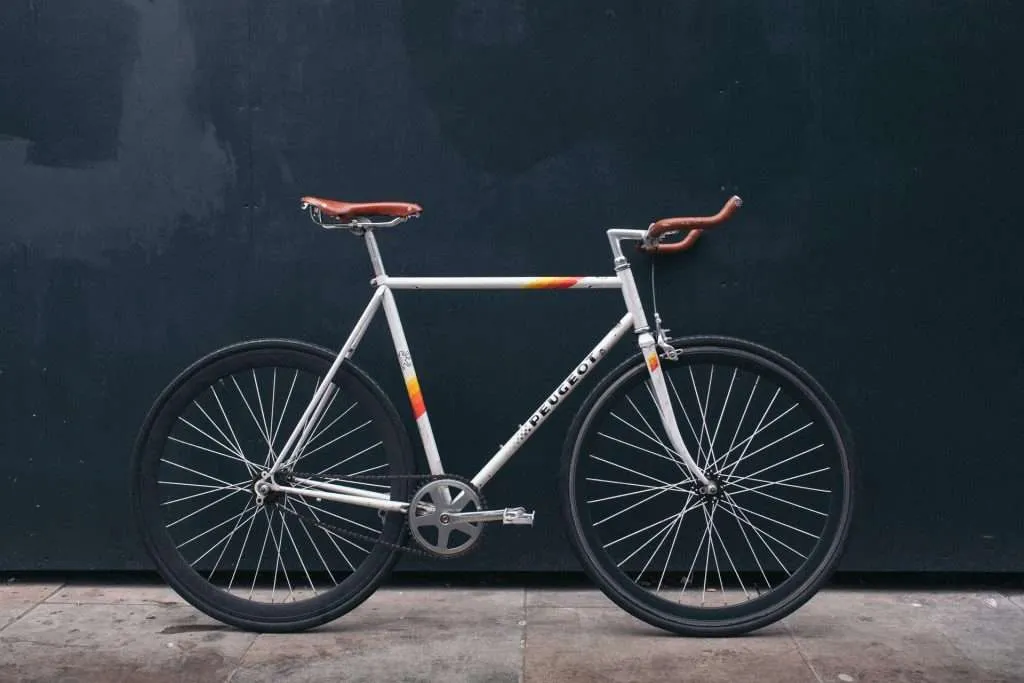
Handlebars and Grips
Women’s bikes have narrower handlebars than men’s bikes. It’s because women have narrower shoulders than men. A narrower handlebar width makes for a much more comfortable ride for ladies especially on long rides.
Men’s handlebars are usually set between 42 and 44 centimeters wide, while handlebars for women are between 38 to 40 centimeters wide. Similarly, grips for men are also wider because they’ve got larger hands.
P.S If you’re regularly getting sore shoulders after biking, you should get into a bike shop to get that sorted. It’s usually because the handlebars are too wide for you.
Brake levers
Women’s bikes tend to have shorter reach brake levers to help ladies easily reach and operate the brake levers. The longer reach on male bikes makes it difficult for the average woman to use because men have bigger hands and longer arms.
Crank Arm
This might be the hardest difference to see with your eyes. But the crank arms are shorter in ladies’ bikes. Generally, the crank length of men’s bikes are 170mm vs 165mm for women’s to accommodate the longer legs for men. I know it’s a tiny difference, just thought you should know.
Men’s vs Women’s Bike Seat
Seat (Saddle)
So, let’s talk bums. Bums come in all shapes and sizes, but for the most part, women have bigger and wider bums than men. This difference shows in the bike seats.
Women’s seats (or saddles) are wider and tend to ride lower, while men’s saddles are long and narrow. Female saddles also have more surface area directed towards the rear to provide a better sit bone reinforcement. They also often have a hole or groove in the middle of them to reduce pressure on female delicate bits.
Seatpost
A bike’s seatpost is the bar or tube below the saddle. It holds the saddle in place. Usually, the seatpost for women is shorter than those for men because women are usually not as tall as men. However, seatposts are very easy to adjust to your specific height or ride height preference.
Suggested post: MTB vs Road Bike
Men’s vs Women’s Bike Chart
Here’s a summary table for the major differences between male and female bicycles.
| Bike Component | Mens Bikes | Womens Bikes |
| Frame | Step-over | Step-through |
| Stem | Longer and shorter | Smaller and taller |
| Top tube | Longer | Shorter |
| Tube Angle | Horizontal | Downward-sloping |
| Stack & Reach | Longer | Shorter |
| Saddle | Long and narrow | Short and wide |
| Seatpost | Shorter | Taller |
| Suspension | Stronger | Lighter |
| Handlebar & Grips | Wide | Narrow |
| Brake levers | Longer reach | Shorter reach |
| Crank Arm | Longer | Shorter |
Despite the differences between men’s and women’s bikes, it is imperative to always remember that the best bike for you is the one that “fits” you best. The current demarcation between male and female bikes may not cater to people on the fringes or those who don’t match the stereotype e.g. shorter men or taller women.
So, the rise of the unisex bike is another wonderful development in the biking industry. These bikes may be the way forward, where you just get a comfortable unisex bike and tweak it to your needs.
One of the great pleasures of biking is swapping out parts and checking which configuration works best. I know it can be a hassle and a little costly but you should always get your bike fitted to your “specs”, then you can enjoy a thousand and one rides with minimal fuss.
Thanks for reading!
On a lighter note, if you’re looking for a laugh, check this out for awfully hilarious bike puns for the road or if you’re still in bike geek mode, learn how to tighten your bike chain or the subtleties between geared and non geared bikes.

